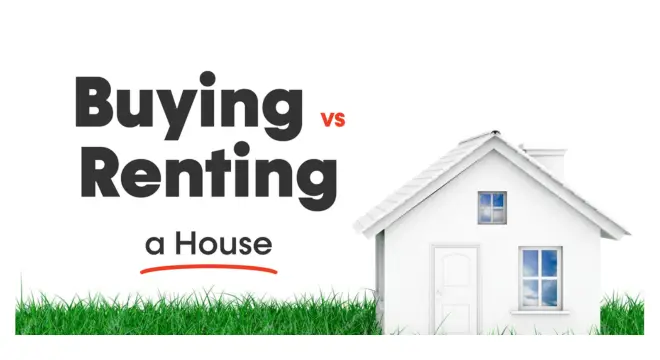2025 Housing Market Shows Decline Compared to 2024: Insights From the Latest Report
Something’s off in the housing market this year.
Maybe you’ve noticed more “For Sale” signs staying up longer. Or buyers taking a step back, not rushing in like they used to. Even sellers—once super confident—are starting to worry if their listings will move.
You’re not imagining it.
Across the country, homes are sitting longer, sales are slowing, and builders are quietly cutting prices. It’s not just interest rates anymore—buyers are tired, budgets are tight, and the frenzy we saw in 2024? It’s gone.
You might wonder, “If more homes are available, why isn’t this a buyer’s dream?” Because even with rising inventory, prices haven’t really dropped, and affordability is still wrecked. Monthly payments are brutal. And that’s left a lot of people stuck—can’t buy, can’t wait, don’t know what to do next.
In this article, I’ll break down exactly what’s shifting in 2025, why it feels so different from last year, and what it means for you—whether you’re trying to buy, sell, or just make sense of this weird housing moment.
Year‑over‑Year Data: 2025 vs 2024
Let’s talk numbers.
Compared to this time in 2024, home prices in 2025 are only slightly higher—barely 1%. But here’s the real headline: as per News week, sales are down, and listings are up. There’s a clear disconnect. Homes are entering the market, but buyers aren’t stepping up at the same pace.
So even if prices haven’t crashed, momentum definitely has. Fewer offers, slower closings, longer days on market—that’s the pattern.
There’s also been a noticeable drop in new home construction, signaling that builders are starting to back off. When construction slows and inventory builds up at the same time, that’s usually a red flag for demand.
Builder Response & Price Cuts
Builders aren’t ignoring what’s happening. In fact, they’ve been among the first to adjust. Price cuts, discounts, and free upgrades are becoming the norm—especially in areas where demand has cooled off hard.
What does that tell us? Simple: even the pros are having trouble moving inventory. And if they’re dropping prices now, it’s not because they want to—it’s because they have to.
The bigger message here is leverage. Buyers have it. And smart buyers are negotiating like never before.
If you’re considering buying a home in 2025, here’s a full guide to help you understand what to expect: Buying a home in 2025.
Buyer’s Market: Sellers Outnumber Buyers

This isn’t just a softer market—it’s officially tilted in buyers’ favor.
For the first time in over a decade, there are noticeably more sellers than serious buyers out there. And it shows. Homes are sitting longer. Price cuts are happening earlier. In some cities, properties are quietly getting relisted after weeks of no offers.
What’s different this time is the vibe. There’s no panic, but there’s pressure. Sellers aren’t as confident as they were even a year ago. Many are realizing they missed the peak, and now they’re negotiating harder—or just pulling listings and waiting it out.
Buyers, on the other hand, finally have some breathing room. There’s more choice. Less competition. And if you’re willing to be patient, there are deals to be made—especially with homes that have been sitting for a while.
If you’ve been watching from the sidelines, this might be your window. Just don’t assume that sellers will fold instantly. Some still haven’t accepted the new reality.
This shift is part of a broader trend we covered in detail here: U.S. housing market sees sellers outnumber buyers for first time in 12 years.
Mortgage Rates & Affordability Crunch
Even though interest rates have pulled back a bit, they’re still high enough to sting. A 30-year mortgage is hovering around the high 6% range, and that keeps monthly payments steep.
For most people, that means the same home now costs significantly more per month than it did just 18 months ago—even if the sale price hasn’t changed much.
That’s the real pain point. Prices may not look outrageous on paper, but when you plug in the numbers, it’s a different story.
I regularly share quick housing insights and real-time updates here — including price drop alerts, expert takes, and key policy moves. Join the conversation on WhatsApp for more bite-sized updates.
What’s Coming in Late 2025 & Beyond?
Most analysts agree: we’re not heading into a full-blown crash. But a flat, frustrating market? That’s very likely.
Some experts are predicting modest price growth—around 2 to 3% through the rest of the year—but only in certain regions. Think stable Midwest cities or metro areas that didn’t overheat during the pandemic. On the other hand, places like Austin, Phoenix, and parts of California might continue to see price pressure and longer sale times.
Interest rates will be the wild card. If they dip meaningfully below 6%, we might see a small wave of buyers return. But unless that happens, expect more of what we’re seeing now: stale listings, price cuts, cautious buyers.
If you’re a buyer, keep your financing ready and watch local trends closely—especially price drops and how long homes are staying on market. If you’re a seller, pricing realistically from day one matters more than ever. You’re not competing with a frenzy anymore—you’re competing with buyer fatigue.
No one’s saying the market is broken. But it’s definitely shifting—and it’s testing everyone’s patience.
There’s also new policy-level momentum aiming to change affordability across the country—here’s how the 2025 Senate budget plans to support over 500,000 affordable homes.
Final Thoughts
If 2024 was fast and unpredictable, 2025 is cautious and uncertain. The market hasn’t collapsed, but it’s clearly off-balance.
And honestly? That’s not always a bad thing.
Buyers have room to breathe. Sellers who get realistic are still closing deals. Builders are adjusting. What we’re seeing is a return to something more normal—just with 2020s-style complications: affordability issues, supply chain hangovers, and nervous money.
Don’t make your decision based on fear or FOMO. Make it based on what’s true in your local area, your finances, and your timeline.
And if you’re feeling stuck—trust me, you’re not alone. A lot of people are pausing, watching, waiting.
What are you seeing where you live? Are homes sitting? Are neighbors selling? Tell me in the comments—I want to hear how this market feels on your side of the street.
Want deeper insights on buying trends, affordability shifts, and upcoming housing policies? Explore more housing stories on our website.
Disclaimer: This article is for informational purposes only and should not be considered financial or real estate advice. Market conditions can vary by region and change rapidly. Always consult a licensed professional before making any buying or selling decisions.


